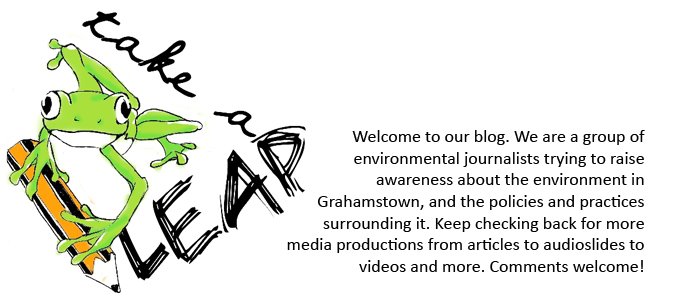by Tammy Sutherns
A new R1 billion scheme to develop water supplies in Grahamstown, which is set to begin construction soon, has sparked a heated debate amongst environmental officials in the area. The Makana Municipality Albany Regional Water Supply Scheme could drastically improve water quantity and quality, but experts claim that the scheme could actually do more harm than good.
The scheme, which will be put into place by the private engineering company Bigen Africa, plans to utilize water from the Gariep Dam on the Orange River by forcing it to flow down the Fish River, to the Glen Melville Dam and finally to the Kleinhans processing works, which Grahamstown currently relies on for its water supply.
The new pipelines will provide more and better quality water to Port Alfred, Kenton-on-Sea and Grahamstown. For Grahamstown, it will mean that up to 5000 new RDP houses could potentially be built in the industrial area and a much better water supply will be available for cheaper for underdeveloped areas. However, not everyone in Grahamstown will have the same benefits from the scheme. According to Rhodes University Anthropology professor Mike Whisson, there will be a 55 percent increase in water tariffs for students and a 75 percent increase for residents living in more up market areas. Whisson believes that there will be legal issues making implementing such a drastic price increase difficult.
A feasibility report for the Albany scheme, however, showed that drastic improvements do need to be made to Makana’s current water system. The report suggested that with the rapid rate of population increase in the area, the current Waainek water works will only be able to provide 25 percent of the water demand by 2030. In addition, assessments conducted on Makana’s water as part of the municipality’s Local Environmental Action Plan (LEAP) in 2005 showed that Grahamstown’s fresh water supply can often be high in nutrients and salt, which compromises the quality of the water the public use.
However, while issues with not liking the taste or colour of tap water leads many students to drinking only bottled or spring water, water quantity and quality issues affect other parts of Grahamstown at a level more worthy of complaint. The water assessments showed that only 22 percent of people in Grahamstown actually have running water inside their houses and even then of an extremely low quality.
While the Albany scheme sounds like a good idea in theory, experts are concerned that the municipality has not properly thought through issues like finance and environmental impact. “I get the impression that a high level political decision has been made which has basically brushed aside expert advice,” said part-time Rhodes University environmental officer Nikki Kohly.
Kohly, along with other experts, believes that the municipality has failed to address the lack of infrastructure to implement the scheme and the problems of overusing Eastern Cape rivers.
“The Department of Water and Forestry (DWAF) has been warning Makana Municipality for years,” said Kohly. “There is no more water available to transfer to the Eastern Cape until the yield of the Orange River is augmented by new infrastructure.”
There are also concerns that water from the Gariep Dam is already used for too many other water schemes and that using water from an inland source for coastal towns actually goes against DWAF policies.
Whisson also claims that the water from the Gariep Dam is too saline and that there is evidence to suggest that it might be polluted with a poisonous algae, but the municipality has not made any effort to address these two problems.
“We should be focusing on the desalination of water in the coastal areas, rather than using inland sources,” said Whisson. “Particularly in view of the projections about the demand for water inland and the prospects of lower rainfall run-off as a result of global warming. The municipality remains vague about their plans but when water rates begin hiking at their estimated rate for students and residents, they will have to start answering questions.”
Municipality officials were unavailable for comment.
Subscribe to:
Post Comments (Atom)





No comments:
Post a Comment